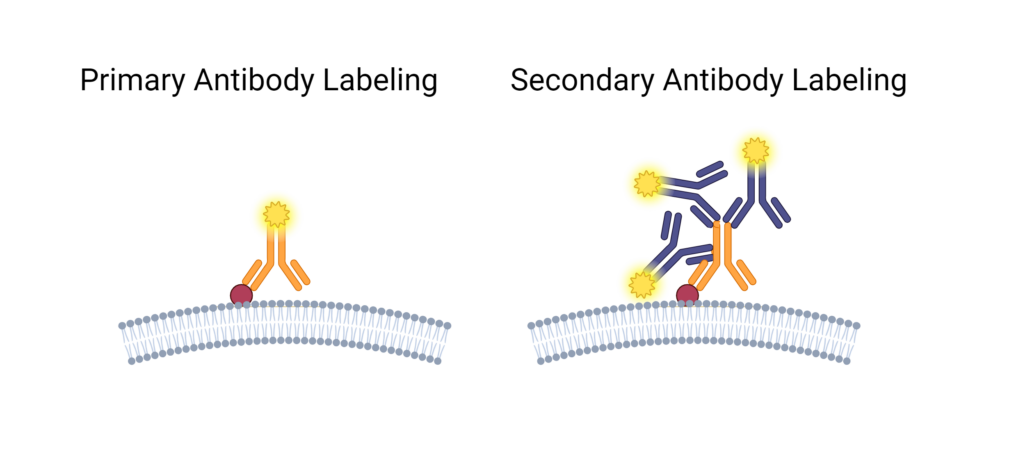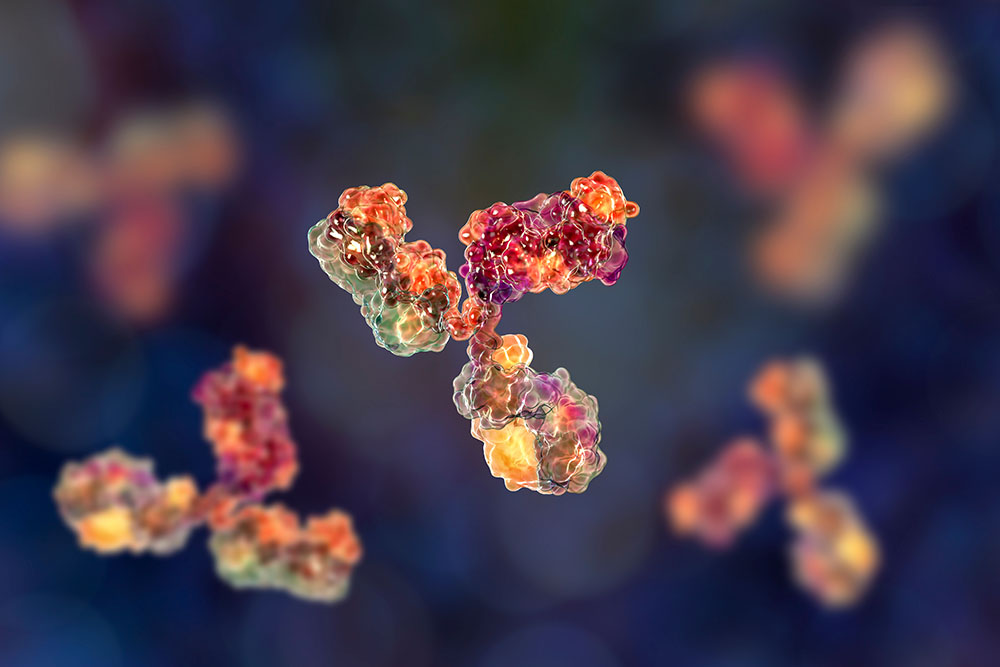Antibodies are one of the most specific tools for the detection and capture of molecular targets. The right antibody can play a key role in revealing the presence, quantity, dynamics, and even binding interactions of a target protein. However, finding the right antibody from over 2 million commercial antibodies and 300+ suppliers can be an overwhelming and confusing task.1 We’ve compiled 7 essential tips to help jump-start your search and hone in on the perfect antibody for your experiment.
1. Choosing the right target of interest
Identifying the most effective target protein, or antigen, and understanding its complexity is key in choosing the right antibody. Homology with closely related proteins can result in cross-reactivity. Proteins may have multiple names, isoforms, splice variants, and post-translational modifications. If your research depends on the antibody recognizing a specific portion of your target, note the epitope the antibody was raised against and confirm it’s within the domain of interest. Fixation methods can alter an antigen as well, and permeabilization or antigen retrieval treatments may be required to make the target or epitope accessible to the antibody. However, both fixation and permeabilization can affect immune affinity reactions. Protein databases, like UniProt and GeneCards, are great resources for more information.
2. Primary or secondary antibodies?
With “direct” labeling, primary antibodies that bind to the antigen are directly detected. “Indirect” labeling is when labeled secondary antibodies are used to detect the primary antibody against your chosen antigen.

The use of directly-labeled primary antibodies requires fewer steps and reagents and is the preferred method for some applications that require multiplexing (i.e., flow cytometry), but the signal intensity is lower as only the fluorophores bound to the primary antibody are present. Depending on your method of detection and the degree of expression of the target, this may be acceptable. Some dyes, such as our CF® Dyes, can help minimize the issue of low signal-to-noise as they allow for a higher concentration of dye molecules per antibody and may produce lower background due to improved solubility and less non-specific binding. Directly-labeled primary antibodies also allow researchers to multiplex using a combination of antibodies from the same host. For more information on this, see Biotium’s Tech Tip on Combining Direct and Indirect IF Using Primary Antibodies from the Same Host.
Using secondary antibodies requires more steps and reagents, but increases sensitivity due to the signal amplification from multiple secondary antibodies binding to a single primary antibody. Secondary antibodies can also be used in Tyramide Signal Amplification (TSA) to further enhance the signal of low-abundance antigens and provide opportunity for multiplexing in microscopy. See this helpful Tech Tip to learn more about multi-color labeling using Tyramide Amplification Kits.
3. Species compatibility
Due to target variation between species, you should confirm that your antibody has been validated for your sample species. In most cases, you will want to select an antibody created in a different host species from your sample species, particularly if using secondary antibodies. Validated antibodies are usually available for widely researched model organisms. If you’re unable to find an antibody validated for your sample species, you will need to assess the antibody’s performance and specificity yourself. This is worthwhile as antibodies are often raised against relatively preserved domains and may recognize your target even if the sequence homology of the epitope is as low as 75%.2
The different types of immunoglobulins (IgG, IgM, IgY, etc.) may also impact cross-reactivity and multiplexing. For example, secondary antibodies that react with IgG (H+L) will react with epitopes on both heavy and light chains, so they will react with other isotypes of primary antibody or different subtypes of IgG. Secondary antibodies that specify a specific isotype for their reactivity (e.g., IgG2a) are cross-adsorbed against other isotypes for specific binding.3 If you seek signal strength and broadness of detection over specificity, consider polyclonal antibodies, which are a mixture of antibodies that recognize different epitopes on a given target. If your experiment requires a higher degree of specificity and consistency, you may want to consider monoclonal antibodies.
4. Formulation and degree of purification
Antibodies are available in various formulations and degrees of purification. Antibodies may be supplied as pure IgG in PBS but may also come with stabilizers such as BSA, gelatin, glycerol, or amino acids. Crude preparations of antibody in serum, ascites fluid, or supernatant may contain unwanted immunoglobulins or other components that may need to be removed to avoid skewing your results. This is especially important if you plan to label your own antibody with a fluorescent dye or other type of label, as additives like amino acids, glycerol, or Tris can affect labeling efficiency.
5. Antibody and application validation
Selecting an antibody that has been independently validated can help you get successful results. Suppliers often list validated applications online or in the product documents. Never assume that antibodies validated for one application, such as western blotting, will work well in another, such as flow cytometry, as the state of the antigen may change with the technique (e.g., the antigen will typically be denatured in western blots while the native form is usually present for microscopy or flow cytometry). Finding published examples of an antibody being used in an experiment similar to yours is one of the best predictors of success. PubMed and CiteAb are great resources for determining which antibodies other researchers are using. It is also worthwhile to look for antibodies validated by the seller. Biotium offers a selection of monoclonal Biotium Choice Antibodies that have been carefully curated and extensively validated in-house for flow cytometry.
6. Multiplexing
Multiplexing allows for simultaneous detection of multiple markers in a single sample. Careful consideration of species and immunoglobulin classes is essential to minimize cross-reactivity and background. Highly cross-adsorbed antibodies work best, and most researchers prefer to use directly-conjugated primary antibodies, as some experiments can require up to dozens of different antibodies. If using fluorescently labeled antibodies, remember to choose conjugates that don’t have overlapping emission spectra!

7. Supplier-provided resources
Most experiments require troubleshooting and optimization. Choosing a supplier with knowledgeable technical support and helpful resources will save valuable time and reagents. Refer to these materials to determine how to best reconstitute, store, and aliquot your antibody, and take note of any special considerations listed. These documents typically provide suggestions for optimal concentrations for different applications as well. In addition to product information documents, Biotium offers an antibody selection tool and a variety of tech tips and general protocols for antibody-based detection. Our Technical Support Scientists are always happy to help with experimental troubleshooting once your antibodies have been put to use, as well.
References
- Baker, M. Reproducibility crisis: Blame it on the antibodies. Nature 521, 274–276 (2015). https://doi.org/10.1038/521274a
- How do I know if the antibody will cross-react? https://www.ptglab.com/news/blog/how-do-i-know-if-the-antibody-will-cross-react/
- (2021, September 2). Will anti-IgG secondary antibody cross-react with IgM primary antibody? – Biotium. https://biotium.com/faqs/will-anti-igg-secondary-antibody-cross-react-with-igm-primary-antibody/






